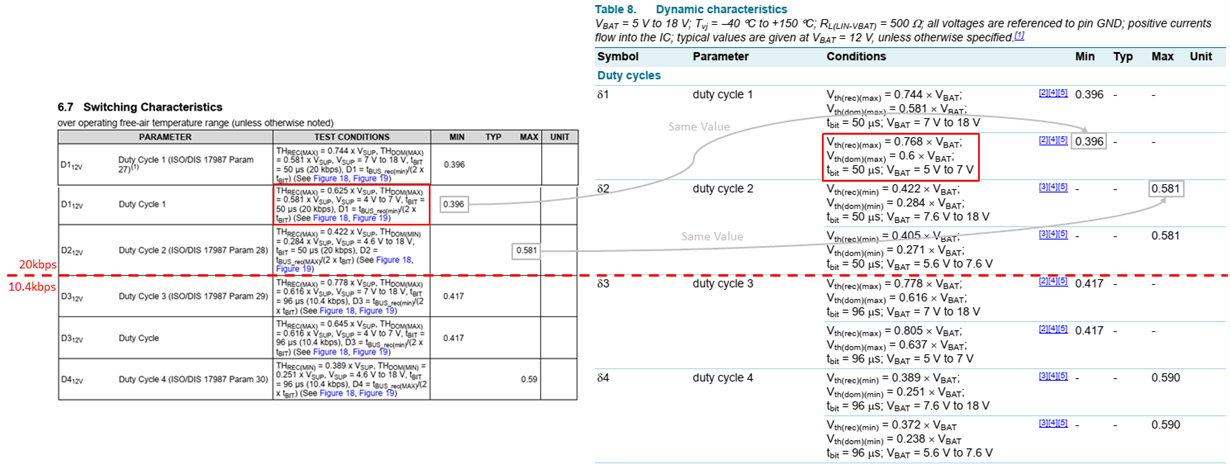[ TLIN1029-Q1 ] Characteristics Comparison between TJA1027
Hi,
My customer is going to replace TJA1027 on their current design to TLIN1029-Q1.
In general, both devices comply to the same standard, thus these can be replaced. I believe... : 0 )
However, if we look into detail specifications, there are some items look same value but something different.
For example, if I compare the duty cycle specifications, its values are same. However, its conditions are different.
I know that the supply voltage range is different (Vsup vs Vbat).
Can you please let me know how do I see same value with different supply voltage range?
Also, if you have any comments on overall specification difference between TLIN1029-Q1 and TJA1027.
Thanks,
Ken

